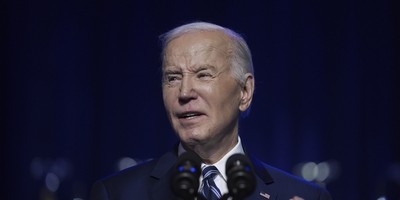I shared a chart back in February that shows how long it takes to double GDP based on different growth rates.
For instance, if the economy grows only 1 percent per year, it takes 70 years before the economy doubles. Think Italy or some other decrepit European welfare state.
But if the economy grows 4 percent annually, the economy doubles in less than 20 years. I’d point to Hong Kong and Singapore as examples, but they grow even faster.
The key point is that long-run growth is the key to a more prosperous society.
And that’s why the relatively weak growth of the Bush-Obama years is so troubling. Moreover, CNBC reports that some policy makers fret that the economy could be facing a period of prolonged stagnation.
Is there something seriously wrong with the economy? It’s a scary prospect, and a concern that’s gotten louder and louder over the past year. In economic circles, it goes by the alliterative name of “secular stagnation.” And it’s a phrase that Fed watchers are likely to hear more and more in the months ahead. Recent comments by the vice chairman of the Federal Reserve, Stanley Fischer, indicate questions within the central bank about whether the slow growth that has followed the recent recession could reflect, or at least could potentially morph into, longer-term issues within the economy. …The theory of secular stagnation was first developed by Alvin Hansen, who wondered in the midst of the Great Depression whether diminishing investment opportunities in a maturing economy would stunt economic growth and permanently prevent full employment—at least in the absence of robust government intervention… These theories have found a new life in the aftermath of the so-called Great Recession, as the U.S. is experiencing (albeit to a much less dramatic degree) slow growth over a relatively long time period.
Recommended
I agree and disagree.
I agree that something is wrong with the economy.
But I disagree with the Keynesian interpretation that the economy’s weakness is because of some mysterious malady that requires government intervention.
Indeed, the problems exist because politicians are doing too much. If we want faster growth and more jobs, we need government to get out of the way.
This Michael Ramirez cartoon is one way of thinking about the issue.
But if you want more substance, Larry Kudlow and Steve Moore have some very sound analysis, which has been reprinted at Townhall.com.
They start by looking at the present-day Keynesian view.
…today many leading economists are throwing up their arms in frustration and assuring us that 2 percent growth is really the best we can do. Barack Obama’s former chief economist Larry Summers began this chant of “secular stagnation.” It’s a pessimistic message, and it’s now being echoed by Federal Reserve vice chair, Stanley Fischer. He agrees with Summers that slow growth in “labor supply, capital investment, and productivity” is the new normal that’s “holding down growth.”…Americans seem to be buying into this dreary assessment. A new Wall Street Journal poll finds that three out of four Americans think the next generation will be worse off than this generation. So long, American Dream.
But the problem isn’t the economy. Or it wouldn’t be if it wasn’t for all the meddling.
Larry and Steve explain that the crowd in Washington deserves blame for the economy’s sub-par performance.
…secular stagnation is all wrong. It’s a cover up for mistaken economic policies that began in the Bush years and intensified during the Obama administration. It would be hard to conceive of a worse set of policy prescriptions than the ones Larry Summers and his Keynesian collaborators have conjured up. We’ve had bailouts, massive spending-stimulus plans, tax increases on “the rich,” Obamacare, rudderless monetary policy that has collapsed the dollar, the Dodd-Frank bill, anti-carbon policies, a vast expansion of the welfare state, and on and on. …The blame falls on the White House and the Fed, and the discredited Keynesian model that government spending, debt, and cheap money are the way to restore growth. …the architects of this colossal policy failure are the same people who promised they would rebuild the U.S. economy “for the long term,” as Barack Obama put it in 2009. But they’re now blaming the stagnant economy on structural problems beyond their control.
Amen.
Just look at the data from the Minneapolis Fed to see how weak the economy is today compared to previous business cycles.
Fortunately, it’s not that difficult to restore growth.
We learned in the 1960s and 1980s how fast the economy can get back on its feet when policy mistakes are reversed. …The secular-stagnation argument is just an excuse for liberal policy failures. Keynesianism should now be recognized as snake oil.
By the way, I’d add the 1990s to that list.
There were some good reasons to dislike President Clinton, but America enjoyed more economic freedom as a result of the policies implemented during his presidency.
As a fiscal policy wonk, I’m especially happy about the spending restraint of the Clinton years.
P.S. Here are some good cartoons about Obamanomics.


























Join the conversation as a VIP Member